キリンソウと四季の彩り日記屋上緑化システム株式会社
技術顧問 山下 律正
206 四季彩6 タケシマキリンソウの木質部の違い
206
四季彩6とタケシマキリンソウの木質部の違い
The difference between the woody parts of Shikisai 6 and Phedimus Takeshima
四季彩6の木質化部 Wooden part of Shikisai 6
木質部の範囲は株元付近とも木質枝に見られる。枝は太く全て木質化しそうに見えるが半数しか木質化しない
木質化枝ではタケシマキリンソウの新芽発生率より若干少ない新芽発生となる。
発生新芽は他の品種に比べ大型のため緑被率はあまり変わらない。
The woody part can be seen in the woody branches near the base of the plant. The branches are thick and all new
appear to be woody, but only half of them are woody. The incidence of appear to be woody, but only half of them
are woody. The incidence of shoots on woody branches is slightly lower than that of Phedimus Takeshima shoots.
Since the sprouts are larger than those of other varieties, the green coverage does not change much.
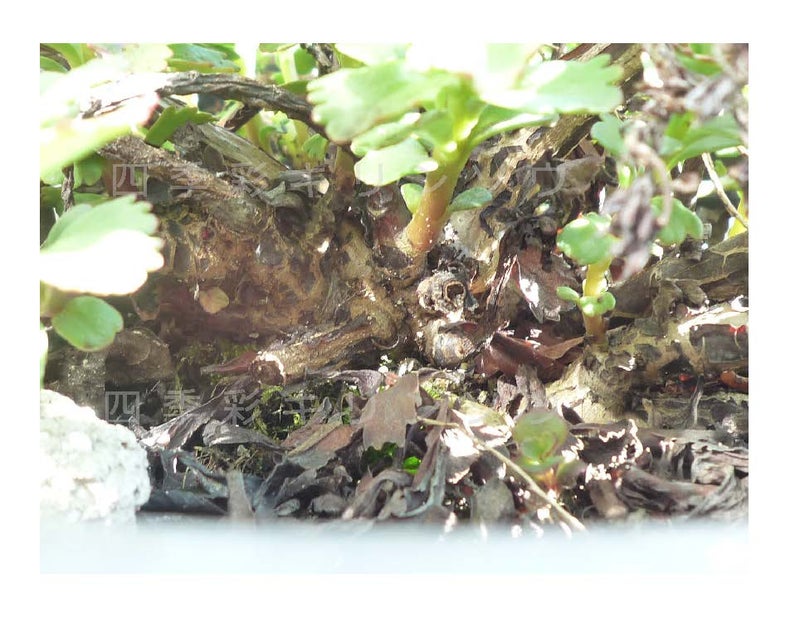

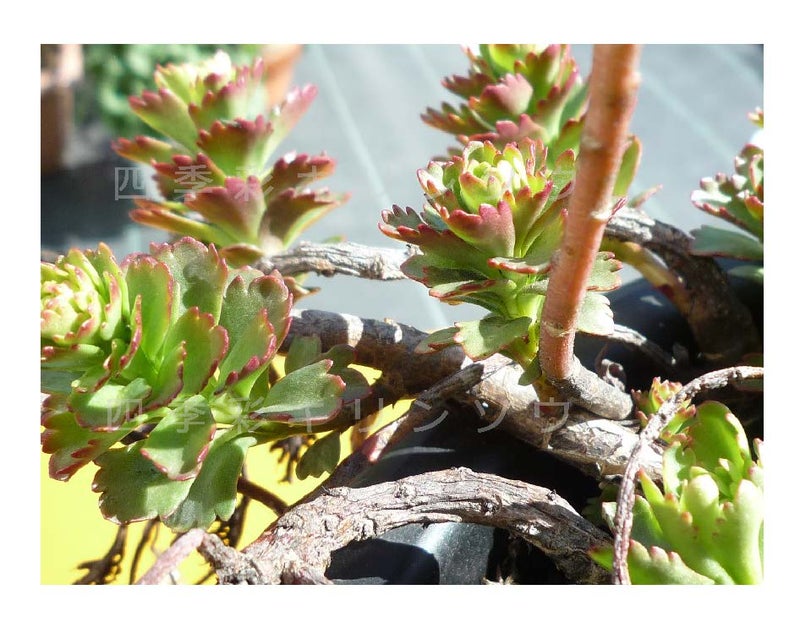

四季彩6の発生新芽は他の品種に比べ大型である。タケシマキリンソウの2月の冬至芽(新芽)は平均的2cm
草丈3~4cmに対し四季彩6は冬至芽(新芽)は平均的に幅3cm 草丈5~9cmの1.5倍程度に達する。
このため、春の成長期には林状に林立した草姿になる。
New shoots are larger than other varieties. Winter solstice buds (new shoots) of Phedimus Takeshima shoots in
February are on average 2cm wide and 3-4cm tall. The winter buds (new shoots) of Shikisai 6 reach an average
width of 3 cm and 1.5 times the plant height of 5 to 9 cm. For this reason, during the spring growing season, the
grass appears like a forest.
2月 四季彩6 草枝幅:3cm
February Shikisai 6 Grass branch width: 3cm
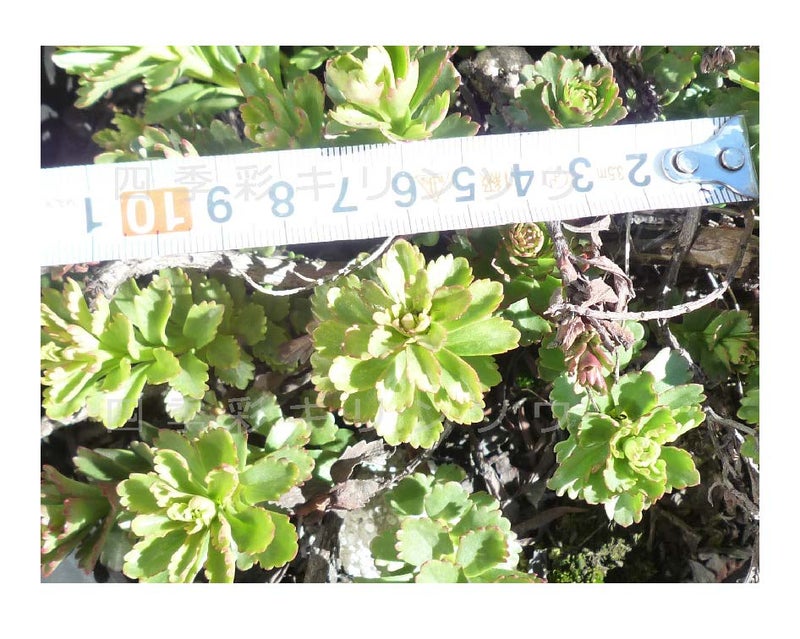

タケシマキリンソウ 草枝幅:2cm
Takeshima Kirinso Grass branch width: 2cm
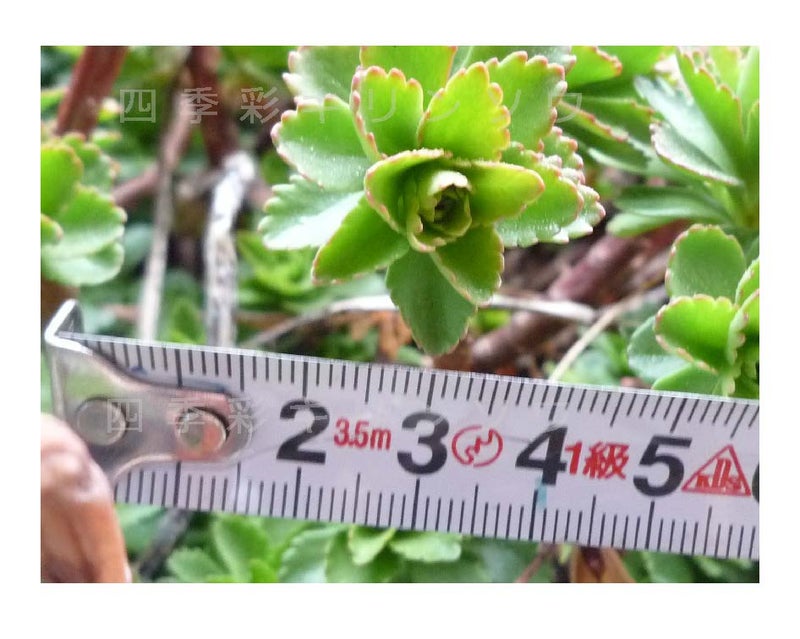

2月 February
四季彩6 草丈:9cm
Shikisai 6 Plant height: 9cm
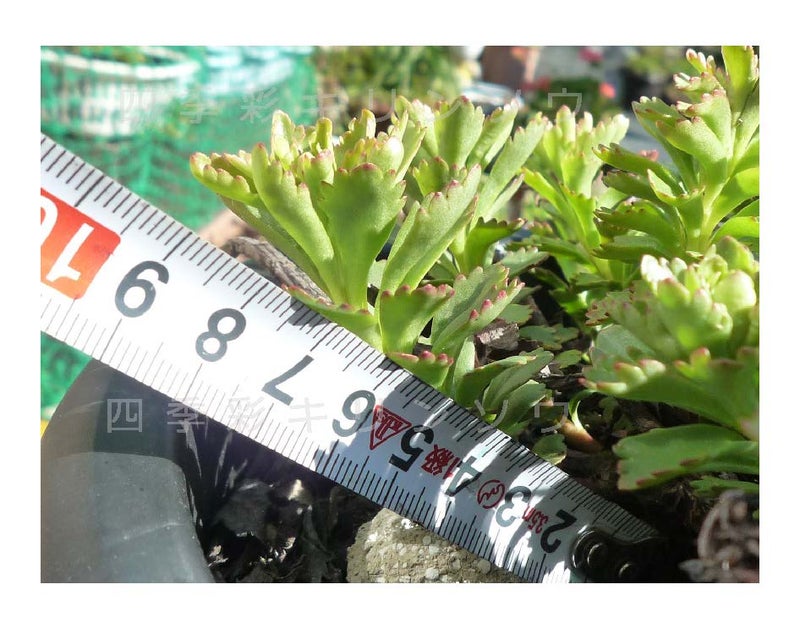

タケシマキリンソウ 草丈:3cm
Takeshima Kirinso Plant height: 3cm
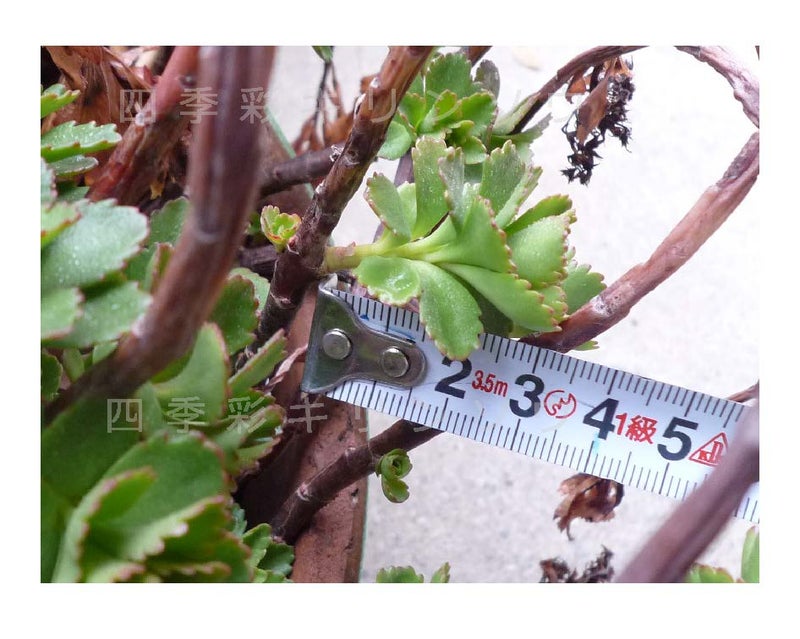

3月下旬 Late March
四季彩6 株幅:25cm程度
Shikisai 6 Plant width: Approximately 25cm
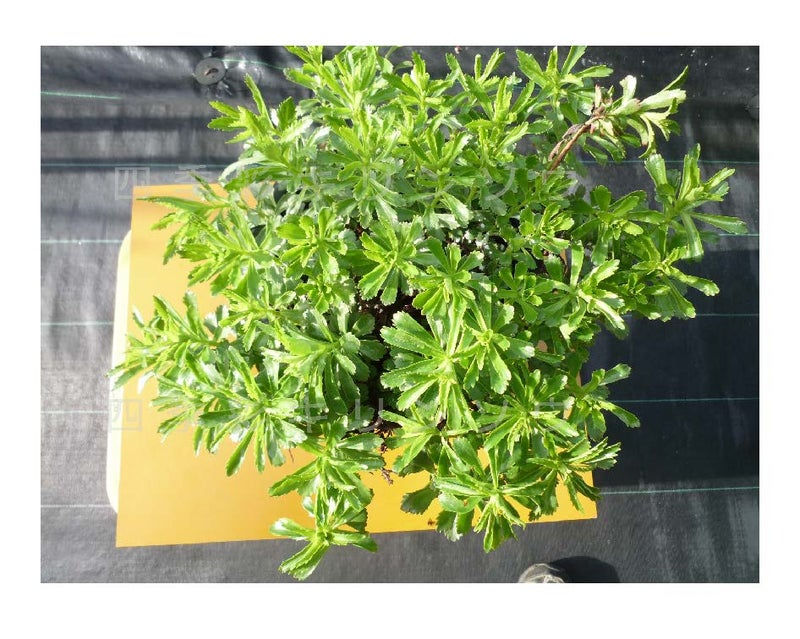

四季彩6 14cmに達する
Shikisai 6 Plant height: Up to 14cm
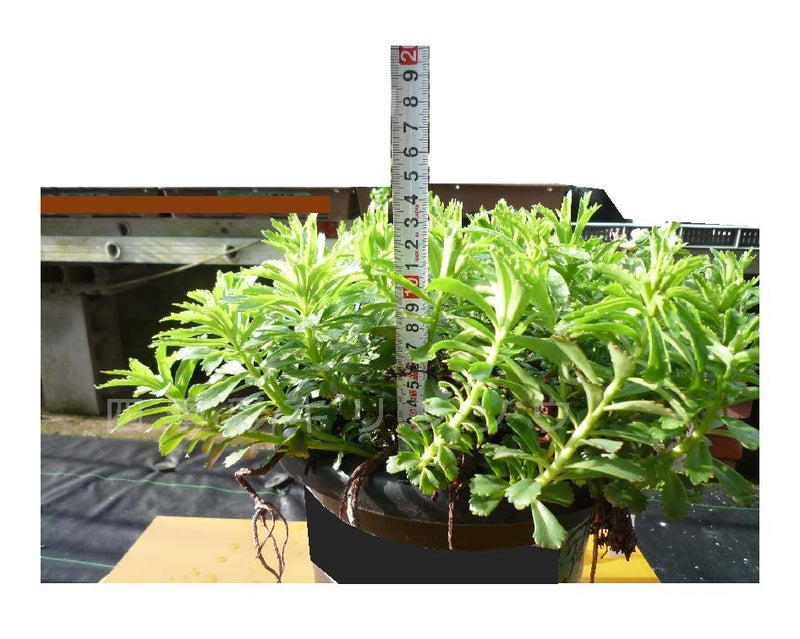

<参考資料:3>
タケシマキリンソウの木質化部は茎部にも及ぶ
<Reference materials: 4> The stems of Phedimus takesimensis shoots also become woody.
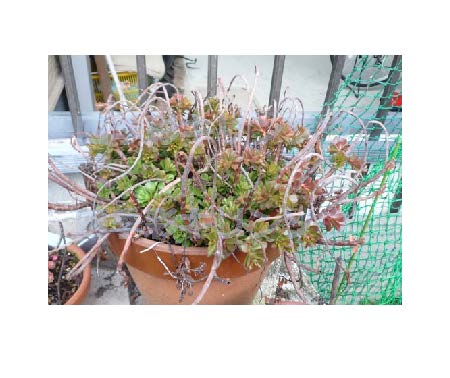

タケシマキリンソウは大中型種であり茎の木質化も大きくなる。
当年成長した茎も本部が木質化し、木質化部分が長いため株元より離れた部分からも新芽が発生する。
経年した株では、茎は当初直立するが、成長の伴い枝は支えを失い開張型に成長し、
株中央部が空いたドーナツ状の草姿を多く呈する。
この現象は、岩場等に着生しているタケシマキリンソウには見られない。岩場の自然環境では栄養分が乏しく、かつ強風等の自然現象に耐える為に茎も低く繊維も多いので茎が倒れにくいのではないかと推察される。
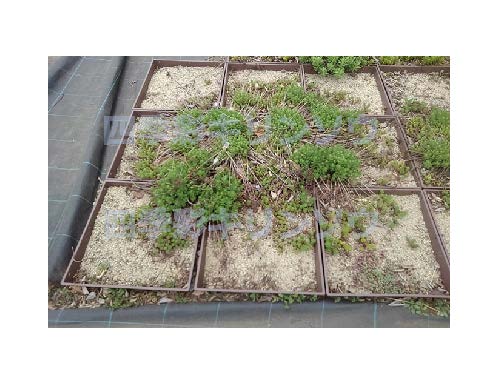

shoots Phedimus takesimensis
are a large to medium-sized species, and the stems become woody. The stems that have grown this year also become woody at the base, and because the woody part is long, new shoots will appear from parts farther away from the base of the plant. In older plants, the stems initially stand upright, but as they grow, the branches lose support and grow into an open shape. The plant often has a donut-shaped grass appearance with an open center. This phenomenon is not observed in Phedimus takesimensis shoots that grow epiphytically on rocky areas. It is speculated that in the natural environment of rocky areas, nutrients are scarce, and in order to withstand natural phenomena such as strong winds, the stems are short and have a lot of fiber, making them difficult to fall over.
技術顧問 山下律正
Technical Advisor: Ritsumeikan Yamashita
新着記事
キリンソウ・セダム屋上緑化の「冬支度と冬の管理」
キリンソウ、セダム類の屋上緑化・壁面緑化 春と秋の挿し芽増殖方法
キリンソウ・屋上緑化・壁面緑化 秋のメンテナンス 甲虫害編
キリンソウ・屋上緑化・壁面緑化 秋のメンテナンス 肥料編
屋上緑化の源風景 災害から屋根を守る知恵が育んだ「芝棟」
四季彩4 キリンソウ 総合技術カタログ A new variety, Shikisai 4 Kirinsou,General Technical Catalog
常緑性キリンソウ「四季彩4」 種苗登録認定 特性解説 第5回 キリンソウの常緑とは?
常緑性キリンソウ「四季彩4」 種苗登録認定 特性解説 第4回 根が露出し裸の状態で、酷暑・防風・豪雨に負けない耐久試験
常緑性キリンソウ「四季彩4」 種苗登録認定 特性解説 第3回 酷暑に耐える緑化植物が受ける温度の影響
常緑性キリンソウ「四季彩4」 種苗登録認定 特性解説 第1回 濃緑色で色彩が冴える



